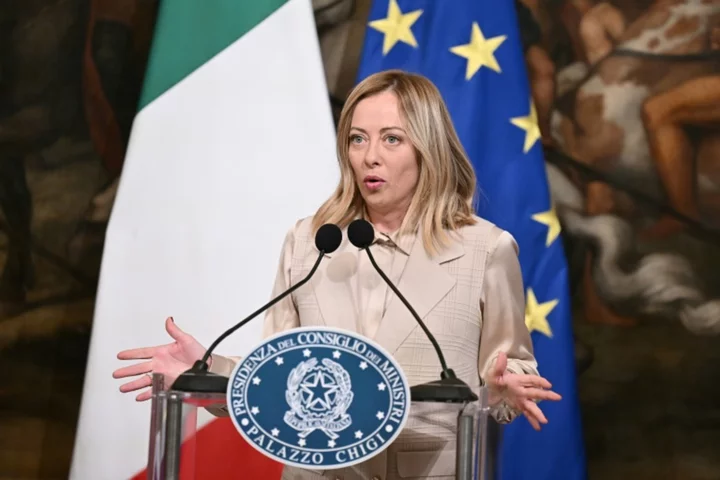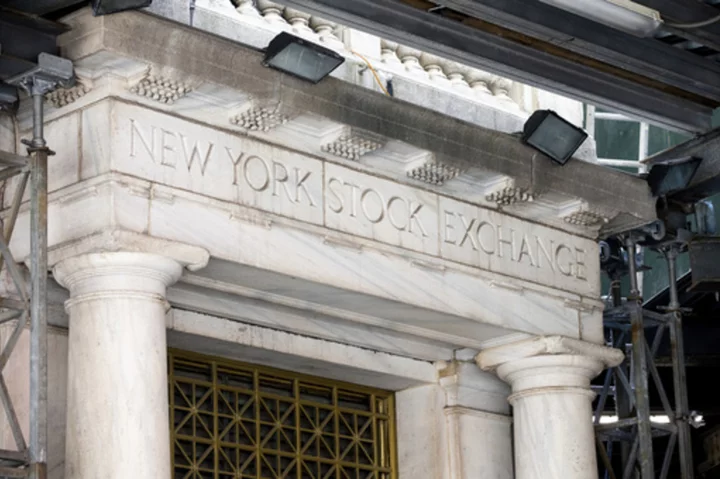The US ratings agency Moody's announced Friday it had affirmed Italy's credit rating at Baa3, and upgraded the country's outlook to "stable" from "negative," citing its significant economic strengths.
"The decision to change the outlook to stable from negative reflects a stabilization of prospects for the country's economic strength, the health of its banking sector and the government's debt dynamics," Moody's said in a statement.
It added that the decision to maintain Italy's credit rating above junk status at Baa3 is supported by its "significant economic strengths, including its robust manufacturing sector, high household wealth, and the low indebtedness of the private sector."
Moody's joins rivals Fitch and S&P Global Ratings in reaffirming Italy's investment-grade rating in recent weeks, providing a much-needed boost to the economic plans laid out by Prime Minister Giorgia Meloni's hard-right government.
"I welcome this evening's ruling with great satisfaction," Italy's economy minister Giancarlo Giorgetti said in a statement.
"It is a confirmation that, despite many difficulties, we are working well for the future of Italy."
Despite the radical past of her government, which also includes Matteo Salvini's far-right League, Meloni promised to follow a path of budgetary responsibility.
But in September, Rome raised its deficit forecasts to reflect a plan to finance an election promise to cut taxes for families with the lowest incomes -- sparking an immediate reaction from the markets.
Ten-year borrowing rates rose sharply, with the gap between Italian and German rates -- the closely watched "spread" -- temporarily exceeding 210 points.
- Concern about the deficit -
The public deficit for 2023 is now expected to be 5.3 percent of gross domestic product (GDP), up from 4.5 percent previously forecast, and 4.3 percent in 2024.
Under government plans, it is only in 2026 that the deficit is expected to fall below the three percent threshold set under the EU's spending rules, which were suspended during the coronavirus pandemic until the end of this year.
Italy's enormous public debt -- the second highest in the eurozone in relation to GDP after Greece -- is expected to decrease only marginally, from 140.2 percent of GDP to 139.6 percent in 2026.
Another worry is that the Italian economy is slowing down, a knock-on effect of the situation in Germany, its main trading partner which is expected to fall into recession this year.
Italy itself narrowly avoided recession in the third quarter of the year, with GDP stagnating after a 0.4 percent drop in the previous three months.
Giorgetti warned on Tuesday that he could revise downwards his growth forecast for 2023, currently 0.8 percent, in a context of high interest rates.
- Moving away from 'negative' -
In August 2022, after the fall of Mario Draghi's government in Rome, Moody's had given Italy's Baa3 rating a negative outlook citing "political risks" preventing the implementation of structural reforms.
The agency warned in April that Italy risked being relegated to the speculative category, citing "sluggish growth" and "higher" debt financing costs, in a context of rising interest rates.
Around the same time, US banking giant Goldman Sachs also sounded the alarm, advising investors to sell debt securities from Italy and focus instead on Spain.
However, Fitch last week confirmed Italy's rating at BBB, two notches above junk, highlighting the "stability" of Meloni's coalition.
S&P had also confirmed its BBB rating for Italy at the end of October, while cautioning that "the pace of government debt reduction will slow."
"Medium-term cyclical economic prospects continue to be supported by the implementation of Italy's National Recovery and Resilience Plan (NRRP)," Moody's said in its statement supporting its decision to improve its outlook.
It added that "risks to energy supplies have abated, in part due to strong policy action by the government."
bh/ar/ide/da/acb









